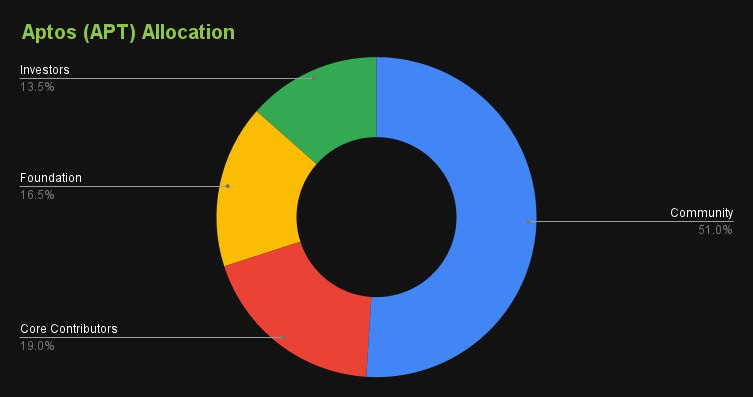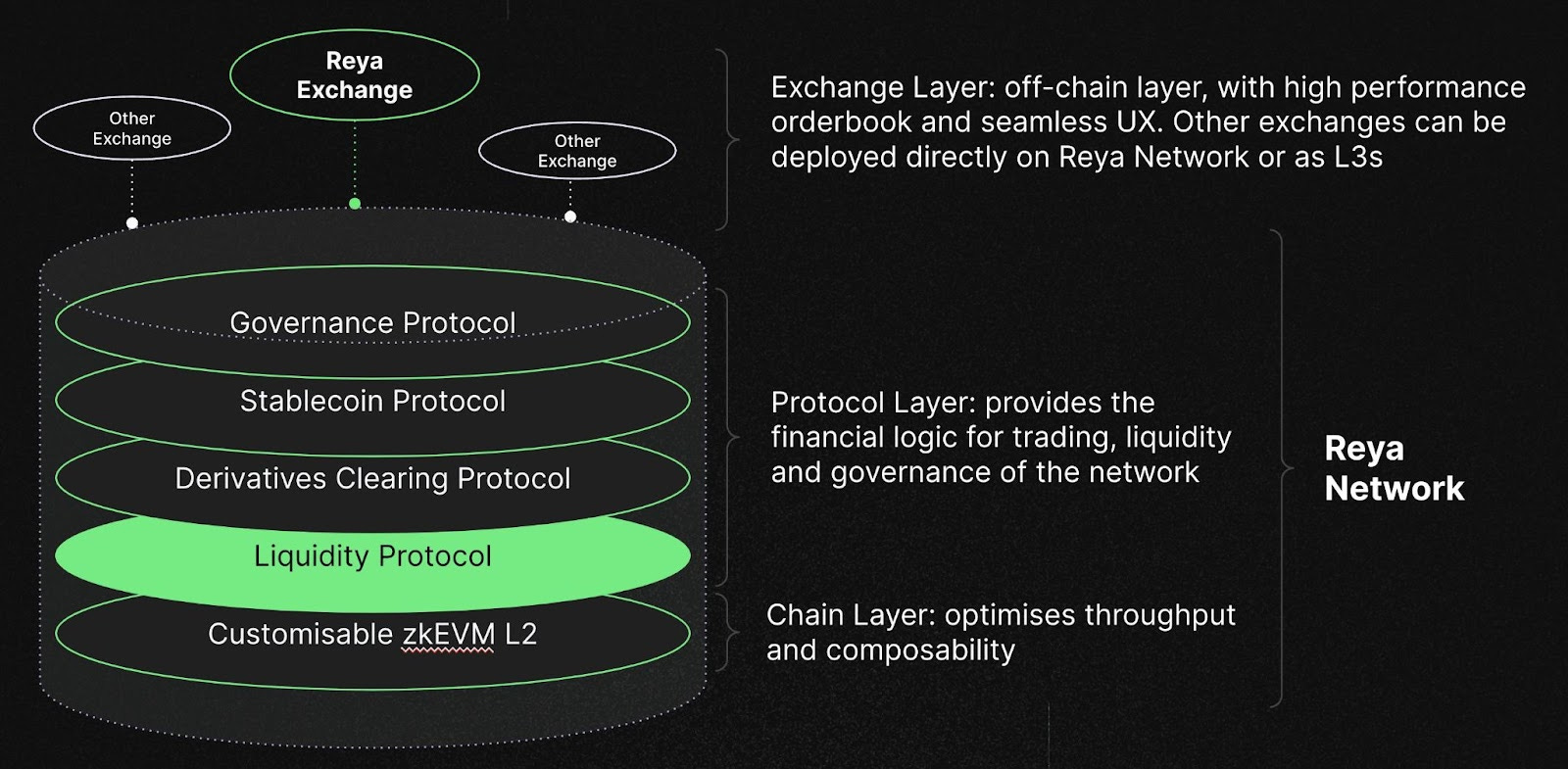We have had our fair share of disappointing airdrops recently. Laughably low allocations, locked tokens & questionably scaled pie charts have some of us asking “is the airdrop meta over already?”
I am seeing farming fatigue and low morale across the timeline. Farmers accustomed to “easy mode” can barely be bothered to keep clicking. Everything is diluted, the VCs have won. The apathy of our weak willed competitors is our advantage.Easy mode may be winding down but if you are willing to put in the extra work to step outside of your comfort zone I believe there are still plenty of fresh fields to plough.
I have no doubt that we will see more massive airdrops before the year is over. This could come from a completely unexpected source based on past on-chain activity like we saw with $TIA and $PYTH or it could come from an undervalued opportunity the masses are fading.
There is no doubt farmers have been dealt a series of bad hands by greedy protocols making a mockery of “the path to decentralization”. Hoarding their tokens and offering only a pittance to the community.
The gloom from wasted time and resources is causing a decent subsection of airdrop farmers to give up at a crucial point before harvest season. It will only take one big drop or one protocol that rewards their users generously before everyone wishes they had been hard at work instead of sleeping on the job.
The days of staking 1 $TIA or $JTO for thousands in a free money glitch may be largely behind us. Does that mean I am going to slow down on interacting with tokenless protocols on a potential path to decentralization? Yah nah. I worked a lot harder than this for a lot less reward before web3.
My goal with this week’s newsletter is to inspire you to step outside of your comfort zone to expand your horizons and find the next opportunity. You might need to learn a new ecosystem, make a new wallet or place a calculated bet on a less than sure thing. You might have to fight exhaustion and take a few more swings despite recent strikeouts.
Easy mode might be over but there are still under farmed opportunities. We sleep in the bear…if we sleep at all.
1/ Aptos ecosystem + Pontem Network
If you followed my earlier guide to “finding the edge outside the EVM bubble” you should already be on this. If you haven’t started because you were to lazy didn’t have time to make a Pontem or Petra wallet there is no time like the present to get started.

Aptos has currently only distributed 2% of a very generous 51% to the community. I would expect a significant airdrop from this top 30MC coin this year. There are also several tokenless protocols worth interacting with.
-
Fund the wallet via the Liquidswap (Pontem) bridge (Uses Layer Zero)
-
Swap tokens using Liquidswap once or twice a week. Try and build to 1k then 10k+ volume if possible. Liquidswap will be launching their own L2 and should be the primary farm on Aptos.
-
The Aptos bridge is relatively cheap so you can always bridge 90% of your funds back and forth if you are low on liquidity (and start farming L0 S2).
-
Optionally provide some Liquidity.
-
Stake some $APT (12+ would be decent). Keep an eye on any chance to vote on governance proposals.
-
Sign up for the Airdrop. You can see that holding any amount of Aptos memecoins fulfills a requirement. Apparently this page is not for the Pontem airdrop itself but a future project we don’t have details on yet.
Additional protocols.
-
Mint some amAPT liquid staked Aptos using Amnis Finance. You can also mint and stake StAPT.
-
Lend your liquid staked APT using Aries Markets. You can borrow APT and loop this or use borrowed tokens as LP on Liquidswap.
-
Make a few swaps on Thala
There are currently only around 100k active APTOS wallets. If the next airdrop is 5% of a 4b MC coin, that could amount to $1500+ per qualifying wallet, depending on allocation criteria. If that happens Season 3 will be heavily diluted and our edge will be gone.
2/ Reya Network

Given recent performance, it shouldn’t be surprising that any opportunity that requires liquidity in any form has become an auto fade for the majority of farmers. We can use this to our advantage by taking a small position while others lick their wounds on the sidelines.
Deposits to Reya are in USDC. If we think about Reya as providing yield on stable coins, 16-35% is a typical yield depending on your risk appetite. I think there is a decent chance we can at least hit the upper end on that with Reya tokens, with upside for more. As with anything new, consider the smart contract risk vs potential reward.
Reya raised 16M from Framework, Coinbase, Robot Ventures, Amber, Wintermute, Bankless, and others. I suspect if zkSync or other L2s perform well in the face of so many recent dud airdrops, we could see a late scramble to provide liquidity on Reya.
Reya is built on the Arbitrum Orbit stack and capable of up to 30k tps. Reya aims to build a trading optimized modular L2. Focusing on infrastructure for DeFi, and a passive-LP Pool. The passive LP leverages price index generation to facilitate contracts at an index. In theory this reduces execution risk for traders. DeFi focused chains aren’t particularly sexy but given the star studded backing, Reya has a chance to outperform.
USDC can be deposited from ETH mainnet, Polygon, Optimism or Arbitrum. Even better, withdrawals are already enabled (if a bit convoluted until it becomes a one click option).
This means you don’t necessarily have to deposit USDC for months on end. You can zap in for a few weeks and if you need the capital, withdraw it back without ever interacting with ETH mainnet.
The EXP boost is active until May 13th so this is time sensitive.
There is currently $90mil deposited in 45k bridges giving an average of $2000 per depositor. It shouldn’t require a huge amount of capital to rank up with Reya. One day, one of these “deposit to earn” projects will not be totally linear and a minimum allocation will make faders weep.
3/ Sanctum

Sanctum is more of a bonus play in that if you are holding Solana in any form, I think it is worth the small amount of effort and smart contract risk to farm Sanctum passively and apply several compund strategies.
Sanctum has quickly garnered adoption growing from $35mil to $500mil TVL in the last 6 weeks.Sanctum raised over $6 million from Solana Ventures, Dragonfly capital and Sequoia capital.
Currently the median deposit is less than 1 $INF. Holding 5+ INF will put you in the top 20% of stakers. If the TGE is not entirely linear there is a chance for a more than reasonable allocation. If the token is issued solely based on capital deposit and you were holding $SOL, well you haven’t really lost anything and likely outperformed other staking strategies.
If you are completely new to Sanctum, the platform is a gamified liquid staking one stop shop.Stake/Unstake and Swap between LSTs easily. Sanctum aims to increase decentralization by reducing the concentration of LSTs with large validators.
Deposit a variety of Solana LSTs into the infinity pool to receive $INF the native LST of Sanctum. $INF is a yield bearing token that provides yields from fees on the platform and the yields of the deposited LSTs.
Sanctum currently supports 18 different LSTs. Holding a minimum of 0.1 $SOL of any of these LSTs in your wallet creates a pokemon style “pet”. Pets gain EXP every minute corresponding to the amount of the LST held. Each pet earns 10 exp per 1 sol worth of LST per minute. Each pet can “evolve” up to 3 times based on experience level and can reach a maximum level of 999.Once you hold an LST click on the EXP counter at the top of the screen to see which pets you own and how close you are to leveling up.
Sanctum offers “Wonderland” community based quests throughout the season. Completing the wonderland quests will earn EXP multipliers for your pets.
Sanctum Strategies
- If you want to “collect them all” consider holding a minimum of 0.1 of all 18 LSTs there could be a bonus multiplier for have each “pet” above a certain relatively low level.
Which LSTs to buy and hold and why? I've gone through all of the available LSTs and I'm going with these 5 for the following reasons:
If you want to “collect them all” consider holding a minimum of 0.1 of all 18 LSTs there could be a bonus multiplier for have each “pet” above a certain relatively low level.
Which LSTs to buy and hold and why? I've gone through all of the available LSTs and I'm going with these 5 for the following reasons:
1.1/ INF - flagship product of Sanctum, a basket of all the other LSTs, the median amount held is ~0.85 INF, so if you hold 1+ INF you'll be above the median, if you hold 5 + INF you'll be in the top 20% of wallets
1.2/ hSOL - LST of Helius (raised $12.6M https://cryptorank.io/ico/helius#funding-rounds)
My gut says there's a decent chance they'll tokenize at some point and reward holders of their LST, since revenue in the RPCs provider space is super competitive I'm thinking they are more likely to raise based on potentially releasing a token.
The founder has hinted at future rewards for those that hold the Helius LST or stake with their validator "you're really gonna wanna stake with Helius" and in the reply mentions they will have a LST as well. Might also be worth staking a tiny bit of sol with their validator.
1.3/ pathSOL - TLDR access to the sanctum NFT collection, right now its basically a raffle system but you can get special roles in the discord for holding either 1, 10, or 50 pathSOL
the collection size is going to be 10k and I don’t think they will distributed all the WL spots via raffle and will likely base a lot of the future spots based on your pet level of the pathSOL LST (would try to get to at least pet level 50 or 100+) which is like 10-20 days holding ~5 SOL worth
breakdown of Pathfinders NFT: Lee, a member of the Sanctum team, is collaborating with the Pathfinders NFT project to introduce the inaugural "unruggable" mint, powered by their PathSOL LST.
Here's the process: When you mint a Pathfinders NFT, the SOL used for minting becomes locked within the NFT itself. This means that at any point, you can burn the NFT and retrieve your original mint cost. This approach not only renders the NFT collection deflationary but also aligns incentives between the project and its holders.
The team is motivated to retain the SOL within the NFT, ensuring a consistent stream of staking rewards for the project. Meanwhile, holders face virtually zero risk, encouraging them to retain their NFTs and await the team's future plans.
I firmly believe that Pathfinders will excel on secondary markets. you can learn more about the NFT here:
1.4 dSOL - LST of drift, S1 snapshot happened recently and TGE/airdrop launch is soon, holding their LST is a speculative passive play at potentially qualifying for more Drift tokens in future seasons
1.5/ jupSOL - similar thesis to Drift, however feel more "diluted" as jupSOL is currently the 2nd most used LST on Sanctum with 780k SOL compared to the 18.1k SOL with Drift These are also listed in terms of weighting so I would be holding the most in INF and the least in jupSOL
Verdict / my take - If you have unused SOL laying around and are comfortable with the smart contract risk (which is a risk in literally every airdrop farm or defi protocol) then this is a great way to farm Sanctum (which is a very passive/low effort farm) while also maintaining SOL exposure.
While this wont be a super lucrative Jito level style of airdrop, Sanctum raised $6.3M and this should be a pretty decent airdrop a few months down the line imo as long as they don't go fully linear for the distribution and over reward the whales, the amount of LSTs your holding and for how long will determined the potential airdrop amount you get as well.
Again you can get a XP boost (unclear how much but docs say it will be applied at the end of season 1) by using my ref link here or code C7QZIU https://app.sanctum.so/wonderland?ref=C7QZIU
4/ Karak
There are so many airdrops to farm, I think we can all consciously or unconsciously look for reasons NOT to farm something. In the case of Karak, there are legitimate reasons for concern.
The Karak team previously built Risk Harbour, an insurance protocol on Terra Luna. You can probably guess how an insurance protocol built on $UST went down. Risk Harbour was given a $1 billion grant in $UST from the Luna foundation. As UST collapsed the team withdrew $7 million apparently through a backdoor and have been accused of using these funds to build Karak. The Karak team have denied the accusations.
While I would exercise caution with Karak, the overwhelming consensus on Crypto twitter is to auto fade it. We are looking for opportunities that go against consensus and restaking remains one of the main narratives of 2024. So far, Karak is the only legitimate competitor to Eigenlayer who will launch at a multi billion dollar valuation despite their own share of issues. By competing on the same lucrative playing field, Karak is capable of achieving a significant valuation.
Karak already raised $48 million from Coinbase Ventures, Pantera Capital and Bain Capital among others at a $1 billion valuation. Obviously there are concerns but the team were able to convince leading VCs to pile in and the competition is significantly less than Eigenlayer (600m TVL on Karak vs 15bil). If Eigenlayer ends up fumbling in any number of ways, the door could be open for a vampire attack to attract protocols over to Karak.
If Karak were to launch at a $5 billion TVL and airdrop 5% - a $250million airdrop is one of the better yielding opportunities currently available. This is a risk vs reward proposition.
Karak allows for staking a variety of LSTS and assets such as USDC & WBTC. This includes restaked assets already staked to Eigenlayer like rsETH and EzETH. Whether you consider this a dream airdrop lego or a sign of the pending restaking apocalypse depends on your risk tolerance. Karak also uses its own L2 for security and as a sandbox for providers to test before deploying to Karak. Deposits are currently enabled from Ethereum, Arbitrum, Mantle and the Karak L2.
Karak Strategies
I would definitely advise against leveraging/looping Eigenlayer restaked assets and then depositing them onto Karak. That seems like one too many layers of degeneracy given the recent EzETH depeg. If you did want to double dip Eigenlayer + Karak I would suggest simply minting your LST of choice and then depositing it to Karak.
Restaked assets give 1x Karak points. If you want to maximize your Karak exposure, depositing WETH directly gives 2x Karak points.
Depositing mETH from Mantle also gives 2x Karak points. While unconfirmed, this could make you eligible for Mantle rewards like Eigenlayer points while farming Karak. (Note: depositing mETH from ETH mainnet earns 1x points)
If you are farming Ethena Season 2, depositing USDe to Karak earns 20x sats making it one of the more attractive $ENA yield farms.
Another option is if you were using any of the Pendle fixed yield pools, these can be deposited into Karak and earn 1x Karak points on top of your Pendle yield.
There aren’t a lot of great uses for WBTC in Ethereum Defi but if you want exposure to Bitcoin and can live with the Karak smart contract risk you can deposit for 1x points, something you can not do with Eigenlayer.
If you want to deposit to Karak you currently need an invite code. Here are a few 5JECc ADPoV 9p6CG IrAUR kfc2R Cu5ZV KHeDR 1r8X3 VEn4i WD3aE knigP 1iltl
5/ Bonus: Stacking DAO + Bitflow
I have covered the $STX ecosystem previously but keeping with this theme of finding an edge due to the barrier to entry, this may be one you have yet to take action on.
Stacking DAO can provide some exposure to the BTC ecosystem you may not currently have. $STX went on an epic run earlier this cycle and has since retraced, providing a decent entry. There are around 60k users and $170mil TVL on Stacking DAO, providing another high quality underfarmed opportunity.
Everything you need to know to get started is in this thread
Until next time, stay Insightful